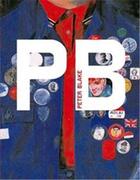Résumé:
A plain speaking, jargon-free account of contemporary art that identifies key themes and approaches, providing the reader with a clear understanding of the contexts in which art is being made today.
Since the 1960s contemporary art has overturned the accepted historical categorizations of... Voir plus
A plain speaking, jargon-free account of contemporary art that identifies key themes and approaches, providing the reader with a clear understanding of the contexts in which art is being made today.
Since the 1960s contemporary art has overturned the accepted historical categorizations of what constitutes art, who creates it, and how it is represented and validated. This guide brings the subject right up-to-date, exploring the notion of 'contemporary' and what it means in the present as well as how it came about.
Curator and writer Natalie Rudd explains the many aspects of contemporary art, from its backstory to today, including different approaches, media and recurring themes. Each chapter addresses a core question, explored via an accessible narrative and supported by an analysis of six relevant works.
Rudd also looks at the role of the art market and its structures, including art fairs and biennales and how these have developed since the millennium; the expanded role of the contemporary artist as personality; how artists are untangling historical and contemporary narratives to expose inequalities; the ethics of making; and the potential for art to improve the world and effect political change. A 'toolkit' section offers advice on how to interpret contemporary art and where to access it.
Offering a more multi-narrative and international perspective, this guide discusses what motivates artists as they try to make sense of the world, and their place within it.
Donner votre avis















